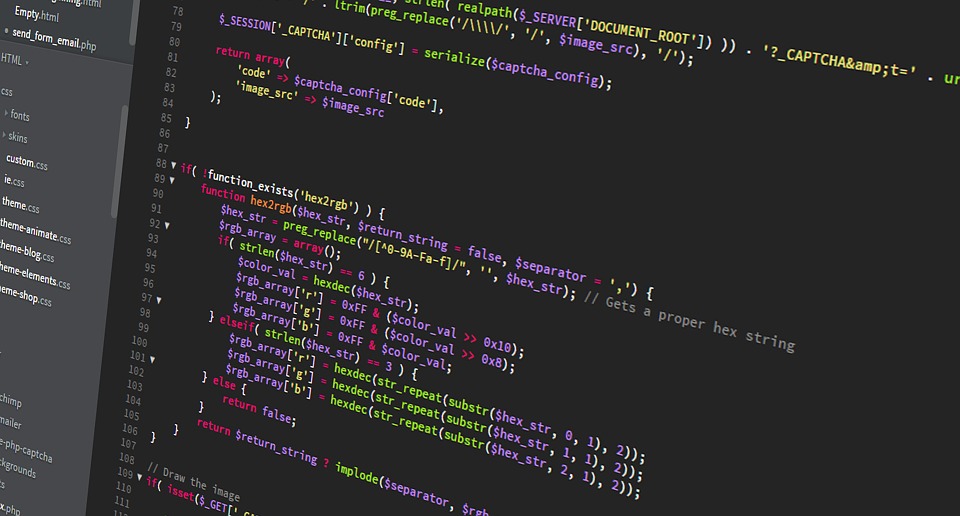Seeing an elegant building, we often don’t even imagine that its shape, height, and loads it carries are possible due to solid and powerful foundation hidden from the field of vision. The same happens with digital products: when we open the website that downloads the history of our interactions with it in split seconds, or set the application connecting us with friends and saving our data on any device, when we do simple everyday operations like sending emails or downloading files, most of us don’t know that those interactions are possible due to back-end development which establishes the foundation for effective front-end and enables steady functionality of websites and applications.
A lot of internet users and clients ordering services for creating a website or an app think that web development is one-stage process. In fact it is divided into two parts: front-end and back-end development, and for people standing far from this sphere of professional activity, it might be really hard to understand the difference. In our previous articles we have already described general directions of web development and gave a closer review of front-end development issues. Today the theme we raise deals with back-end development, its essence, tools and specific nature.
What is back-end development?
In general terms, a website or dynamic web application is a number of files containing structure, design, content, and functionality. The technologies and codes that enliven a site, the area of web development which makes the site run invisibly to users is called backend. It consists of the server, the database, and the server-side applications. Back-end is the far side of the web page or screen functionality; to set the analogy, it could be imagined as the brain or the engine of a website or app.
For example, when users navigate their web browser to https://tubikstudio.com/, they actually turn to the server where Tubik Studio website files are located and send a request to see them. It should be also noted that loading a website, users aren’t looking at that website directly on the server. The server sends the files to the web browser, which then looks at them locally, on user’s computer. In fact, backend sets the basis on which front-end development is able to come into play. Backend developer programs core computational logic of the system including software, website and information.

What are the objectives of back-end?
The key tasks of back-end are accessing the data that users request through the web browser or app, combining and transforming it, and returning the data in its processed form to the requester.
Accessing the data that users request
Any time of day or night, there’s always the chance that users will ask for data surfing the website or using the app. Taking it into consideration, back-end should be available on demand being ready to react and respond users’ requests.
For practical situation, let’s imagine someone launches an e-commerce startup before their website or app is prepared for a considerable number of users to log in and shop, especially in the high season of celebrations like Halloween or Christmas campaigns. In this case, the launch is done on the shaky ground. What will happen? One day, the website or app will crash. Make no mistake, not being able to get the response from the website, users will get angry and quickly find deals from the competitors. This is how the invisible foundation of back end directly supports not only digital product but far more – brands, companies and clients.
Back-end always works with data. A developer has to understand it is vital for the back-end to be developed on the basis of security practices. This is even more significant when the data interacts with secure information, such as medical, personal, or financial data.
Combining and transforming the data
The data that is required for website or app can come from a variety of sources called databases. The task of back-end is finding information the user needs within the databases, which contain enormous amounts of data, and then combine it in a way that provides useful and required results.
Imagine that someone downloads the app for traveling or opens the website aimed at this theme and wants to know how to arrive at a particular destination. The website or app will need to get access to the information from the city transport databases, taxi companies, Google Maps and so on and so forth.
What happens if the questions, which back-end has to respond, change over time? The structure of backend is always optimizable which means that developers will be able to respond new requests within its code.
Returning the data
Eventually, as soon as back-end gathers and combines all the requested information, the data should be sent to the user. How can many internet users read the information in code produced for back-end? Perhaps, a small handful of chosen. What should others do? To solve this problem, here come the famous APIs playing the role of back-end “translators” transforming pure code into a language legible and edible for humans.
For the efficiency of a digital product performance, it is perfect when web designers, front-end developers, and back-end developers can work together from the earliest stages of any project and have a constant feedback loop. It provides the ability to choose the best design and development solutions and technologies so that the final result could look great and operate properly.
What is the structure of back-end?
Back-end includes three parts: server, databases, and APIs.
The server is a computer, a device or a program whose purpose is managing network resources and data.

Alternatively referred to as a databank or a data store, and sometimes abbreviated as DB, a database is a big amount of indexed digital information. It can be searched, referenced, compared, changed or manipulated with optimal speed and minimal processing expense.
APIs (Application Programming Interfaces) are the tools that transport the data sent from back-end to front-end of the website or app. This data, in particular, can include elements of the layout such as buttons, menus, controls, tabs, images, copy, etc.
Back-end presents a combination of the databases and the applications written in a server-side language running on the servers.
Server-side languages
PHP. It is an HTML-embedded scripting language. The main aim of the language is to allow creating dynamically generated pages quickly. PHP is easy to install and deploy, it is staying competitive with lots of modern frameworks, and is the foundation for a number of content-management systems (CMS). PHP powers famous web sites and platforms such as WordPress, Wikipedia, Facebook etc.
Python. It is an interpreted, object-oriented, high-level programming language with dynamic semantics. This programming language is fast, making it effective for getting things to market quickly. Python is simple; its syntax is easy-to-learn, readable and therefore reduces the cost of program maintenance. It is the oldest of the scripting languages and often referred to as powerful and effective. Python powers famous sites such as YouTube, Google, The Washington Post etc.
Java. It is a programming language designed for use in the distributed environment of the Web. Java is similar to C++ language, but it is simpler to use than the latter and enforces an object-oriented programming model. It can be used to create complete applications that may run on a single computer or be distributed among servers and clients in a network. Java powers famous sites such as Twitter, Verizon, Salesforce.
Ruby. It is dynamic, open source programming language with a focus on simplicity and productivity. Great for building complicated logic on the database side of a website, Ruby connects the back-end and database functionality that PHP and SQL can offer. It is characterized as the language of easy maintenance and high-traffic demands. Ruby powers famous sites such as Hulu, the original version of Twitter, Living Social, Basecamp etc. Moreover, the framework Ruby on Rails for this programming language has extensive libraries which support a higher level of flexibility for a developer in the process of creating code for particular aims. Here in Tubik we also use this programming language as the basis for back-end development.
C#. It is type-safe, object-oriented language that enables developers to build a variety of secure and robust applications that run on the .NET Framework. C# can be used to create Windows client applications, XML Web services, distribute components, client-server applications, database applications, etc. It also can be used to build iOS and Android mobile apps with the help of a cross-platform technology like Xamarin.
С++. It is an enhanced C language typically used for object-oriented programming. C++ is effective for complex applications also built on the .NET Framework.
Erlang. It is a general-purpose programming language. Erlang has built-in support which increases its level of competitiveness and distribution. It is used in several large telecommunication systems from Ericsson.
Server-side frameworks
ASP.NET. It is an open source web framework for building modern web apps and services with .NET. It creates websites based on HTML, CSS, and JavaScript that are simple, fast, and can scale to millions of users.
Ruby on Rails. It is an open source Ruby language framework for developing database-backed web applications. Ruby on Rails is also full-stack framework which includes everything needed to create a database-driven web application, using the Model-View-Controller pattern.
Django. It is a high-level Python language web framework that encourages rapid development and clean, pragmatic design. Django is also free and open source.
Node.js. It is a JavaScript runtime built on Chrome V8 JavaScript engine. Here are some examples of Node.js frameworks:
- Hapi.js
- Socket.io
- Express.js
- Mojito
- Meteor
- Derby
- Mean.js
- Sails.js
- Koa.js
- Total.js
Relational database management systems (RDBMS)
In order to work properly, every website needs a database to store its code, images, files and other data. The following relational database management systems (RDBMS) are the most popular for web-based applications:
- MySQL
- PostgreSQL
- MongoDB
- Microsoft SQL Server
- Oracle
- Sybase
- SAP HANA
- IBM DB2

Let’s draw up the balance. Front-end is the part of the website or app which users see and interact with. Back-end is the engine behind the interface, allowing data validation, processing and storing.
Recommended reading
Server-Side Scripting: Back-End Web Development Technology
Web Development. Basics of the Job.
3 Web Dev Careers Decoded: Front-End vs Back-End vs Full Stack
The Languages and Frameworks You Should Learn in 2016
I Don’t Speak Your Language: Frontend vs. Backend






